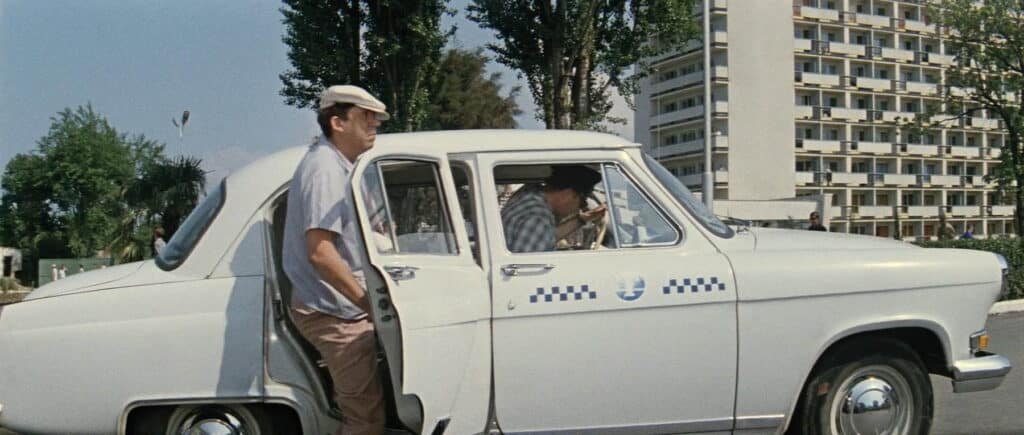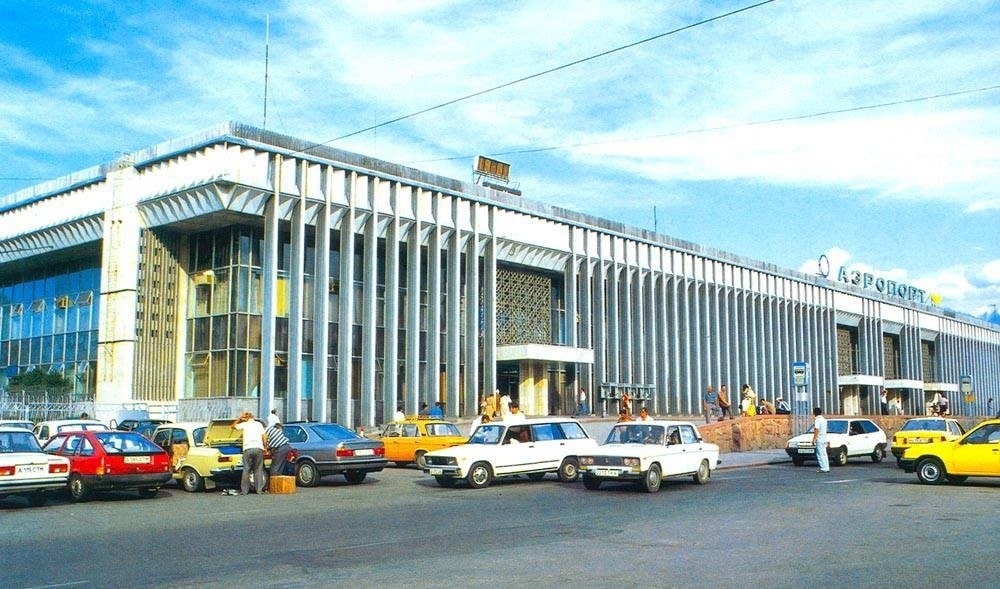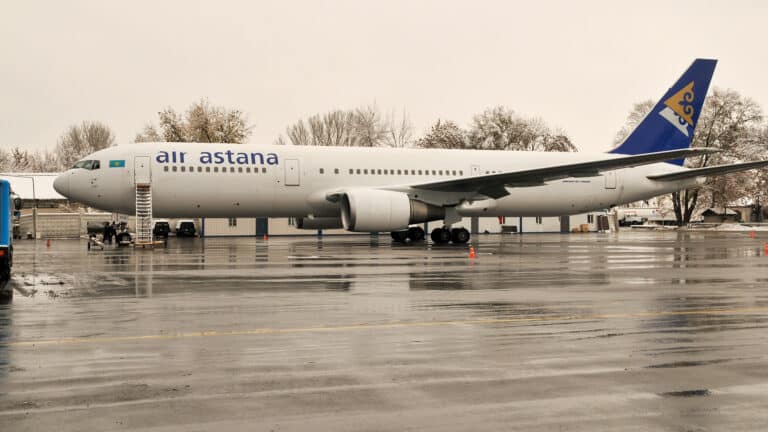
Oct. 9, 1907, marked a pivotal moment for taxi companies worldwide when the first taximeters — special devices installed in cabs to measure fares — were introduced in London. This innovation revolutionized the taxi industry, making it a more professional type of transportation. To commemorate this date, Kursiv Lifestyle presents a brief history of taxi development in Kazakhstan.
The first Almaty taxi: a luxurious ride
In the Russian Empire, taxicabs first appeared in major cities like Moscow, St. Petersburg, Minsk and Helsinki between 1906 and 1907. Almaty, then known as Verny, one of the strongholds of the empire, followed suit shortly after, introducing its first traffic regulations in 1909. These early regulations set speed limits of 21 kilometers per hour (km/h) within the city and 30 km/h outside its boundaries.
In early 1912, Babakhan Nurmukhamedbayev, a merchant from Tokmak, a city in northern Kyrgyzstan, requested permission from the authorities to establish automobile transportation routes linking Pishpek (now Bishkek), Tokmak, Verny and nearby villages Arasan and Merke. He also introduced the first public vehicle to Verny — a Berliet, a French automobile brand that merged with Citroën in 1966.
Nurmukhamedbayev purchased a Berliet omnibus model, which had been assembled at the Krylov Brothers factory in Moscow. Weighing nearly 1.5 tons, the vehicle measured 4,622 x 1,778 x 2,133 mm with the top raised and featured a gasoline-powered, four-cylinder engine and four band brakes. The car had two large headlights and two smaller ones.

The Berliet was tested on Almaty’s streets and along the Ili route (modern-day Suyunbai Avenue), where it managed steep inclines and rugged terrain. Its first driver was 26-year-old Johann Reinwald from Courland (now Estonia). A typical fare for a ride was around 50 kopecks, equivalent to $10-$14 today.
In 1913, Reinwald began offering passenger transportation independently, after purchasing the Berliet from Nurmukhamedbayev. The following year, a resident of the Vladimir province introduced a Czech Laurin-Klement vehicle to Verny and began providing taxi services.
The Berliet frequently broke down due to the challenging terrain, requiring Reinwald to source expensive replacement parts from distant locations. Eventually, he sold the car and left the city.

Cities in the Russian Empire featured luxury brands like Charron, Panhard-Levassor, Opel, Laurin-Klement, Rossel-Peugeot, Stoewer, NAG, Adler, Gaggenau and Ford. In more affordable markets like Uralsk and Guryev (now Atyrau), the Presto brand became popular. The cost of a Presto was about 1,300 rubles, while Ford and Berliet cars ranged from 3,700 to 8,000 rubles — comparable to the modern-day price of a Land Cruiser. Fines for traffic violations, such as drunk or reckless driving, could reach up to 50,000 rubles, equivalent to $244,000 in today’s currency.
For context, room rates at the most luxurious hotels in the Russian Empire ranged from 1 to 1.75 rubles per day. An average apartment cost around 10,000 rubles, while a mansion could go for 30,000 to 50,000 rubles. The annual salary of a government minister did not exceed 8,000 rubles, with ordinary citizens earning between 5 and 100 rubles per month.
The rise of Volga cabs
By 1923, Kazakhstan had 126 registered cars, though Almaty’s cab industry didn’t truly take off until the 1930s, when the Soviet Union began producing GAZ vehicles to replace horse-drawn carriages.
In 1936, the newspaper Sotsialisticheskaya Alma-Ata published its first interview with a cab driver, in which the motorist shared his frustrations with passengers and the poor condition of the roads.
«One day I picked up a decently dressed man and his daughter from house No. 37 on Krasnoarmeyskaya Street. We headed to the brewery, where the man met his wife and from there, we continued to visit his mother-in-law. On the way, they started fighting, and I even had to threaten to knock some sense into them with the car’s starting handle!»
A few years before that interview, several GAZ cars equipped with taximeters had already appeared in Almaty. After World War II, the city’s first taxi fleet was formed, starting with six Pobeda (GAZ-M20) cars.

At the time, experienced drivers mentored younger colleagues, teaching them not only driving skills but also how to interact with passengers. In the mid-1950s, foreign cars were gradually replaced with Soviet-made GAZ and ZIS models.
By the late 1950s, the GAZ-M21 Volga had become the mainstay of Almaty’s taxi fleet, according to Vladimir Khalin, an executive director of a taxi company in Semey. Toward the end of the decade, a green light was introduced as a key feature of taxis, placed on the right side of the windshield. When a taximeter was turned on, the light switched to red, signaling that the cab was occupied.

From 1948 to 1977, the base fare for a taxi ride in Almaty was 10 kopecks, with an additional charge of one kopeck for every 100 meters traveled. This rate doubled after 1977 and remained unchanged until 1991.
In the 1960s, a taxi dispatch system was introduced. Customers would call a central office and dispatchers would relay pickup details to drivers via radio.
Between the 1960s and 1980s, new taxi fleets were established in all major cities of the Soviet Union, including Almaty. By 1970, the number of taxicabs across the USSR had reached 50,000, and 20 years later, this figure had surged to more than 200,000. However, after the collapse of the Soviet Union, taxi companies began to face severe shortages of gasoline, spare parts and other essential resources, leading to the closure of most of these enterprises.
From hitchhiking to ride-hailing aggregators
Like other post-Soviet countries, Kazakhstan privatized its state-owned taxi fleets and only a few continued to operate. While certain car models were used for cabs during the Soviet era, today’s taxis come in all shapes and sizes.
Additionally, a unique form of transportation became popular in Almaty and other cities — hitchhiking cabs. During rush hour, dozens of people line up to catch informal taxi rides, saving money but also taking significant risks. The media has reported several cases of harassment and even kidnappings associated with this method.

In the early 2000s, the first ride-hailing aggregators emerged, requiring only a smartphone and a mobile app. Zingo, an American startup introduced in 2003, was the first taxi aggregator, but it required passengers to call dispatchers and drivers paid subscription fees. As a result, it has never made it to Kazakhstan.
In July 2016, Uber launched in Almaty, followed later that year by Yandex Taxi, which has since been rebranded as Yandex Go.
Other cab aggregators operating in Kazakhstan include InDrive, Aparu, Maxim, Sooncar, Econom, Region, Uber and Allo Taxi. However, Yandex dominates in both Almaty and Astana. Last year, Yandex Go introduced a shared ride option at a lower cost, reminiscent of the traditional hitchhiking cabs popular in Almaty.

In Kazakhstan, aggregator apps have replaced the traditional method of calling a cab by phone, making it easy to find a nearby car in minutes. However, this convenience comes at a higher cost, especially during peak hours or bad weather, due to a dynamic fare system that adjusts prices based on demand.
Between January and May 2024, revenue from passenger transportation rose by almost 50%, according to the Bureau of National Statistics. The number of passengers increased by a quarter during this period. Yandex Go, InDrive and Region services lead in popularity. Meanwhile, analysts at Energyprom.kz reported in August that the cost of a cab in Almaty increased by nearly 37% over the past year.
Today, taxis are an essential part of Almaty’s transportation landscape. Electric and hybrid vehicles are becoming increasingly popular options for taxi services. Over the past century, the city’s taxi industry has undergone a remarkable transformation, evolving from a handful of cars to a sophisticated, technology-driven infrastructure that allows riders to hail a cab with just a few taps on their smartphones. However, the competitive landscape in major cities has led to a high degree of market consolidation, with Yandex Go emerging as the dominant player in Almaty’s taxi market.













